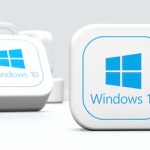Not-for-profit organizations play an important role in our communities by advocating for meaningful change and rallying others to make a positive difference in the world. However, because these organizations typically rely on donations and grants to support their activities, they are subject to stringent regulatory requirements and financial transparency.
With tight budgets and limited time and expertise, nonprofits often struggle with managing their regulatory and compliance obligations. A document management system can help to streamline compliance efforts by centralizing important legal documents, making it easy to access important documents, track deadlines, and ensure that all necessary paperwork is organized and up to date.
Here are four key ways a good document management system can help nonprofits with their compliance efforts:
1. Centralized Document Storage and Accessibility
One of the key benefits of implementing a DMS within a nonprofit organization is the ability to store all compliance-related documents in a centralized digital repository. Policies, reports, contracts, governance materials, and other essential documents can be securely stored and easily accessed when needed. This centralized storage eliminates the chaos of scattered paper documents or disparate digital files, making it easy to locate, manage, and update critical compliance documents.
2. Version Control and Audit Trails for Transparency
Maintaining accurate records and tracking document revisions are essential components of compliance management. A robust DMS offers version control features that enable nonprofits to track changes made to documents over time. This ensures that organizations can demonstrate compliance with regulatory requirements by providing a clear audit trail of document evolution. Version control also helps prevent errors and discrepancies in compliance documentation, creating transparency and accountability within the organization.
3. Security and Compliance Automation
Document security is a top priority for nonprofits handling sensitive compliance information. Modern DMS solutions provide advanced security features such as encryption, user permissions, and data backups to safeguard critical documents against unauthorized access or loss. Additionally, some DMS platforms offer compliance automation tools that streamline adherence to regulatory standards. By automating compliance processes, nonprofits can ensure that tasks are completed efficiently and accurately, reducing the risk of compliance violations.
4. Workflow Management
Compliance management often involves multiple stakeholders and complex workflows. A DMS with workflow management capabilities can help nonprofits streamline their compliance processes, such as document reviews, approvals, and retention schedules. Automated workflows ensure that compliance tasks are executed in a systematic and timely manner, reducing the burden on staff and minimizing the risk of compliance gaps or oversights.
Final Words
A document management system can be an invaluable tool for nonprofits when it comes to managing regulatory and compliance obligations. By centralizing document storage, implementing version control and audit trails, boosting document security, and streamlining compliance workflows, nonprofits can fortify their compliance practices and clearly show their commitment to operating ethically and transparently within the regulatory framework.
About TSG
The Swenson Group (TSG) is an award-winning Bay Area Managed Service Provider that has helped thousands of organizations achieve more by leveraging cost effective technologies to be more productive, secure and cost effective. Services include Managed Print, Document Management, IT Services and VoIP. Products include MFPs, Copiers, Printers and Production Systems, Software and Solution Apps. For the latest industry trends and technology insights visit TSG’s main Blog page.
Subscribe to our Blog
What is a Document Management System?
A beginner's guide to managing documents from paper to intelligent automated workflows.








